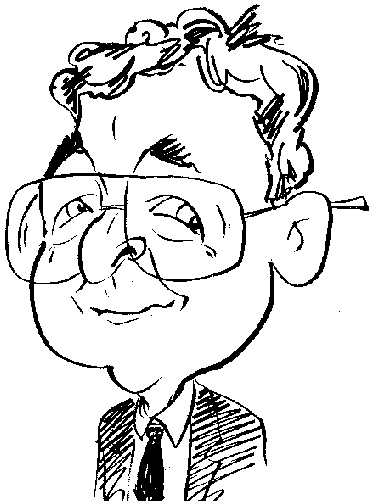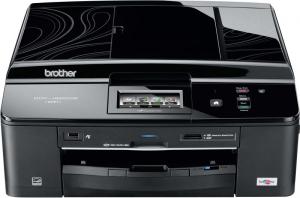Reviews by category
A Multifunction Plus Device
Buy Now...

At 9.3kg, the DCP-J925DW was around 2kg heavier than some of the other multifunction inkjet devices from Brother. Now one reason for this extra weight could be an additional feature that was not present in the other models. The DCP-J925DW allows you to print directly onto appropriate optical media (CD-R/RW, DVD-R/RW and Blu-ray). This process is achieved using a supplied Disk Tray which resides in the scanner lid when not in use. Having inserted a disk into the tray you need to slot the tray into an opening that is revealed when you push down on a flap just above the paper output opening. When you do this the DCP-J925DW automatically switches to Disk Printing mode (more on this a little later).
The DCP-J925DW provides print, copy and scan functionality along with a built-in, and initially concealed, ADF (Automatically Document Feed) with a choice of USB, wired or wireless network connectivity. Decked out in a combination of matt and lacquered black, the DCP-J925DW certainly has an attractive look straight out of the box. The reflective black top of the unit is split into three sections. The central section provides access to the ADF feature while the outer two sections are embellished with a swirly effect. Unfortunately it does not take too long before finger smears mar the appearance.
Both paper input and output occurs at the front of the unit. The supplied paper input tray has a capacity of 100 sheets of plain paper or 20 sheets of photo paper. The design of the paper tray is such that you can store both A4 and 10 x 15cm paper at the same time. The paper input tray also doubles as the support for any output. A small flip-out flap provides extended support sp that documents are not scattered everywhere.
The unit’s control panel, positioned between the A4 flatbed scanner lid and front of the unit, is built around a Touch-screen 3.3-inch TFT colour LCD. You can raise this screen through three stages up to an angle of 45 degrees for a better viewing angle. While many operations can be selected from this touch-screen, there are separate buttons for mono and colour start plus turn the unit on/off.
Just below the control panel you will find a power light which flashes to indicate activity and is sandwiched between a USB port and a memory card slot supporting the SD family, MMC and Memory Stick (Pro, Duo and Micro varieties). Content is shown, 4 images at a time, on the touch-screen. There is an option to edit images either by trimming or enhancing individual photos.
Setting up the DCP-J925DW is straightforward. Having connected the multifunction device to a power source, you can then select the appropriate language option from the touch-screen. While most inkjet manufacturers require you to insert the ink cartridges into the body of the printer and have positioned the USB socket at the rear or side of the unit, Brother takes a different approach. The four inkjet cartridges slot into an easily accessible compartment at the right front corner of the unit while the USB port is located in the body of the printer. Included among the adjustable settings for the DCP-J925DW are those for paper type and size; the automatic shutdown from the default 5 minutes to something more suitable; and setting the default location for scans.
Before attaching the USB lead you need to install the supplied software first if opting for a USB connection. This software includes drivers, MFL-Pro Suite and Nuance Paperport SE. At the appropriate stage you will be advised when to make the necessary connection. When deciding on a wired or wireless network option then instructions are provided in the Quick Setup Guide which need to be followed prior to installing the software.
As mentioned earlier, this multifunction device has an ADF feature which can feed up to 15 sheets through the scanner for photocopying. To access the ADF you need to raise the central (non-patterned) section on top of the scanner. Using the ADF, a 12-page monochrome document was scanned and printed in 2.5 minutes. The quality was more than acceptable.
The A4 flatbed scanner can also communicate with an attached computer. It is both WIA (Windows) andICA(Mac) compliant. The scanner is capable of 48-bit colour input and 24-bit colour output with 256 levels of greyscale. While the scanner’s basic resolution is 2400 x 2400dpi optical this drops to 2400 x 1200dpi when using the ADF. There is also support for 19200 x 19200dpi interpolated.
When adding an image to a printable disk, single step-by-step instructions are shown on the touch-screen. These instructions include removing the unit’s back panel as the disk tray needs to extend out of the back. Various adjustable settings allow you to position the chosen image, which can be sourced from a memory card, USB stick or from content stored on a computer, and select normal or best print quality. Using best print quality, the process took 1 minute 46 seconds. Generally I found the colours to have a washed out appearance when printed on a disk but this did not apply to other types of printing.
The Brother print driver supports the four modes of Fast,Normal, High and Best. Running my usual tests of printing a 101-word document in monochrome and then in colour with an additional image produced the results in the following table.
| Monochrome | Colour | |
|---|---|---|
| Fast | 30 | 26 |
| Normal | 24 | 17 |
| High | 8 | 6.25 |
| Best | 5 | 3.25 |
All four modes produced reasonable results. Fast would be best kept for editing purposes; the other three print modes could fill in for a wide range of documents of varying importance. Printing a borderless 10 x 15cm photo took 17 seconds in normal mode and 60 seconds in best mode. I could detect little difference to account for the almost 4 times increase in print time. A full A4 print took a reasonable 2 minutes 14 seconds. In all cases print quality was of a reasonable standard.
As can sometimes happen, during one print run there was a paper jam. Step-by-step instructions on how to clear the jam are displayed on the touch-screen. You do need to carry out each step before you are allowed to continue printing.
The Brother DCP-J925DW is a well designed multifunction device. Not only do you get the standard print, copy and scan functionality but also ADF and a disk print feature. Replacement standard ink cartridges are priced at £13.10 for back and £8.19 for each colour giving 300-page capacity or extended cartridges at £16.27 for black and £10.24 for colour with an estimated 600-page capacity. The DCP-J925DW is priced at £149.99
| add to del.icio.us | Digg this review |
| StumbleUpon | |














 !!
!!










